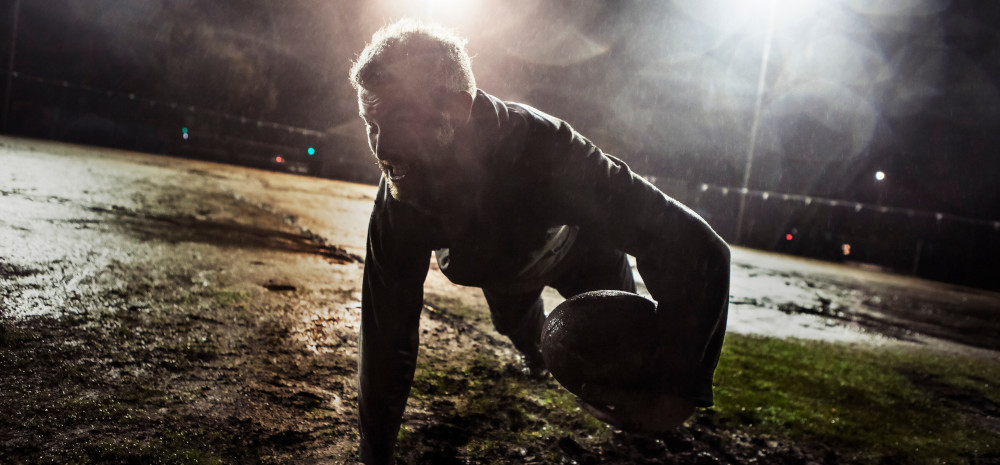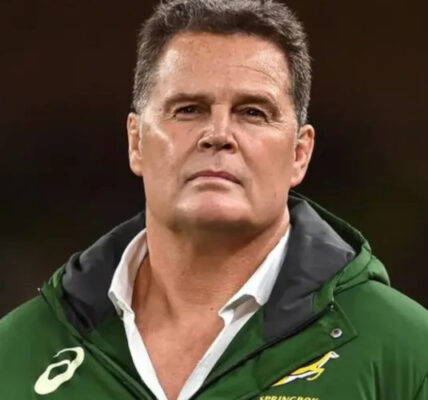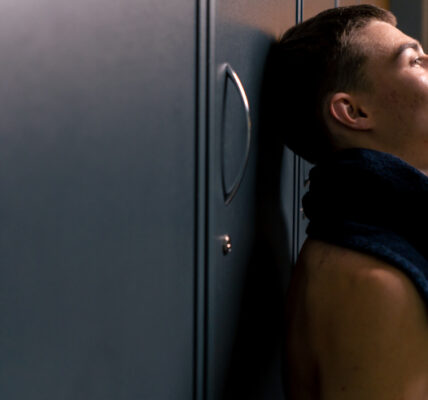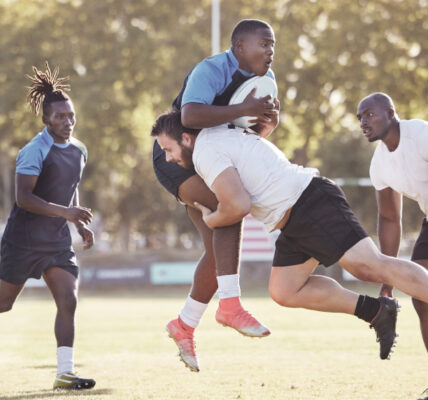They arrive in muddy bakkies and borrowed boots. Some with jerseys older than their kids, others already bleeding from warmup scraps no one saw. The pitch isn’t level. A strip of hard soil and crabgrass behind a scrapyard or on the edge of a township school field where the chalk lines have long disappeared. But for 80 minutes, this uneven patch becomes a battlefield. One where pride is heavier than the scoreboard. One where the bruises last longer than the handshake. This is South African club rugby, not the polished Varsity Cup or live-streamed provincial fixtures, but the real thing. Raw. Untelevised. And sometimes, dangerous.
There’s a romance to club rugby when you’re not too close. The community vibe. The old uncles on plastic chairs sipping brandy from metal flasks. Kids chasing each other barefoot while their fathers knock chunks out of one another just metres away. It’s the smell of cheap boerewors and the sound of Springbok hits blasting from a portable speaker. It feels like a weekend ritual stitched into township life and farm culture alike.
But zoom in, and something darker lurks under the tradition. There’s blood on the boots. And not just from tackles gone wrong. Talk to any player who’s done five or more seasons at this level, and the stories surface. Not in dramatic monologues, but in passing, broken jaws on the blindside, referees chased off the pitch, fists thrown during lineouts, parking lot ambushes long after the final whistle. These aren’t isolated events. They’re part of a culture that worships toughness to the point of self-destruction.
In some leagues, violence is expected, even baked into the club identity. You’re not just playing to win. You’re playing to prove you don’t flinch. That you don’t fold. That your club, your crest, is not to be disrespected. The jersey isn’t fabric. It’s family. And family fights back. A former loose forward from Pietermaritzburg described it like this: “You arrive at the field and it’s not, ‘Let’s play a good clean game.’ It’s, ‘Who’s their enforcer? Who do we take out first?’ If you’re not willing to bleed, you shouldn’t have pulled up.”
The referees, often unpaid, often drawn from the same communities, walk a tightrope. Blow the whistle too much and you’re seen as soft or biased. Let things run and you risk losing control. Many simply don’t show up anymore. They’ve had tyres slashed, threats muttered at their homes, reputations torn apart on WhatsApp groups.
And then there’s the crowd. In many of these matches, the sideline isn’t a boundary, it’s a fuse. One flare-up on the field, and suddenly the tension spills into folding chair fights, stone-throwing, and verbal abuse that doesn’t stop at the buzzer. Players have been stabbed after matches. Coaches have quit mid-season, not because of the results, but because they feared what would happen if they picked the “wrong” squad.
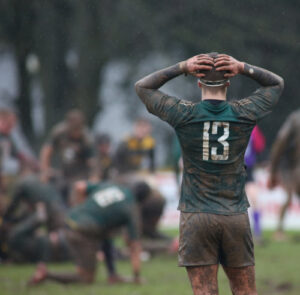 There are clubs trying to clean it up. Some have brought in trained referees, mandated anger management sessions, even banned spectators for high-risk fixtures. Others have formed regional alliances to standardise conduct codes. But it’s uphill. Because for every coach trying to de-escalate, there’s another who feeds the fire. “They think it’s war out there,” one official said. “They tell their guys, ‘Don’t come back unless they know who we are.’”
There are clubs trying to clean it up. Some have brought in trained referees, mandated anger management sessions, even banned spectators for high-risk fixtures. Others have formed regional alliances to standardise conduct codes. But it’s uphill. Because for every coach trying to de-escalate, there’s another who feeds the fire. “They think it’s war out there,” one official said. “They tell their guys, ‘Don’t come back unless they know who we are.’”
And the system offers no real safety net. Most of these clubs are run on shoestring budgets. There’s no union rep stepping in when a player lands in hospital. No psychologist when a 20-year-old watches his teammate get knocked unconscious and twitch in the dirt. No cameras catching cheap shots, no fines handed down for headbutts behind the scrum. The bush telegraph carries the stories, but nothing sticks unless there’s blood on the kit and a photo to prove it.
Still, they keep coming. Saturday after Saturday. Some for love of the game. Some for escape. Some because it’s all they know. And many because in the chaos of these clashes, there is still beauty. The perfect inside pass. The sound of boots on dry turf. The roar when a long-range try breaks a deadlock. The rare moment when everyone, the players, the crowd, the ref, forgets where they are and just feels the game.
But we shouldn’t romanticise it too much. Club rugby, at its best, is community. At its worst, it’s a war zone. The line between the two is paper thin. And until that line is guarded, with education, resources, and accountability, there’ll be more blood on the boots. Not all of it accidental.
Because in South Africa, rugby is sacred. But even sacred things can bleed.
